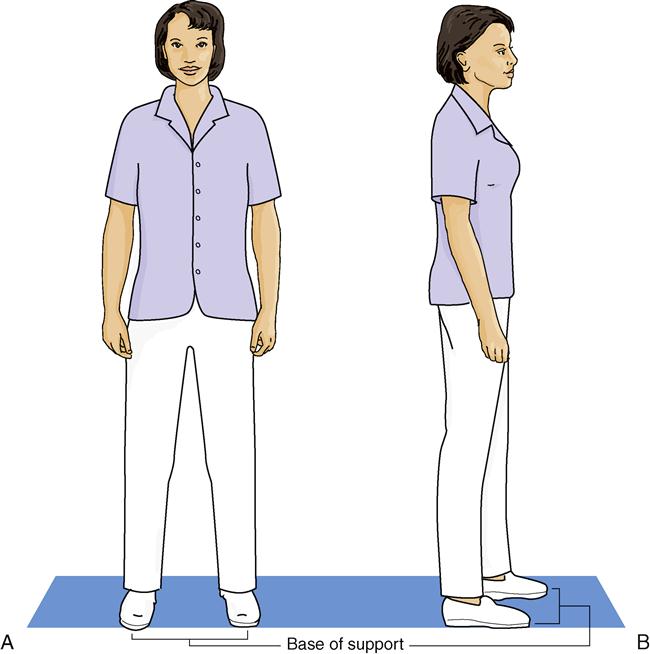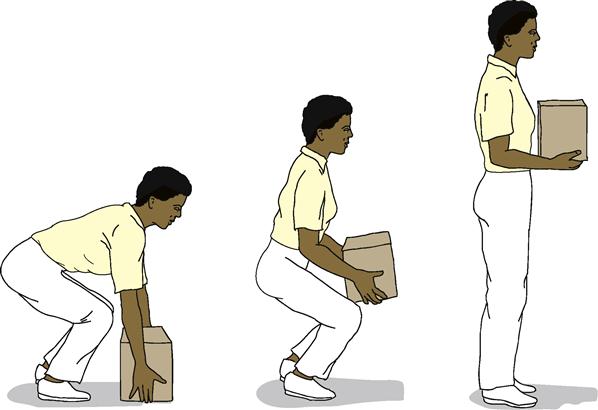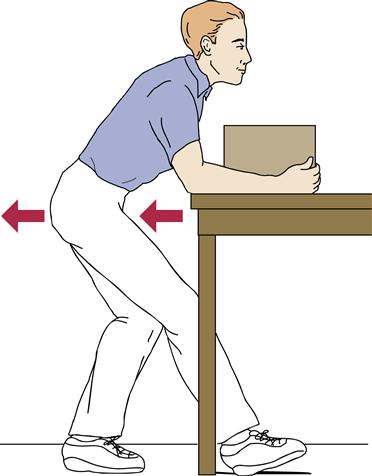Body mechanics
Objectives
• Define the key terms and key abbreviations listed in this chapter.
• Explain the purpose and rules of body mechanics.
• Explain how ergonomics can prevent work-related injuries.
• Identify the causes, signs, and symptoms of back injuries.
• Position persons in the basic bed positions and in a chair.
Key terms
base of support The area on which an object rests
body alignment The way the head, trunk, arms, and legs are aligned with one another; posture
body mechanics Using the body in an efficient and careful way
dorsal recumbent position See “supine position”
ergonomics The science of designing a job to fit the worker
Fowler’s position A semi-sitting position; the head of the bed is raised between 45 and 60 degrees
lateral position The person lies on one side or the other; side-lying position
posture See “body alignment”
prone position Lying on the abdomen with the head turned to one side
semi-prone side position See “Sims’ position”
side-lying position See “lateral position”
supine position The back-lying position; dorsal recumbent position
KEY ABBREVIATIONS
| OSHA | Occupational Safety and Health Administration |
| MSD | Musculo-skeletal disorder |
Body mechanics means using the body in an efficient and careful way. It involves good posture, balance, and using your strongest and largest muscles for work. Fatigue, muscle strain, and injury can result from the improper use and positioning of the body during activity or rest. Focus on the person’s and your own body mechanics. Good body mechanics reduce the risk of injury.
Principles of body mechanics
Body alignment (posture) is the way the head, trunk, arms, and legs are aligned with one another. Good alignment lets the body move and function with strength and efficiency. Standing, sitting, and lying down require good alignment.
Base of support is the area on which an object rests. A good base of support is needed for balance (Fig. 16-1). When standing, your feet are your base of support. Stand with your feet apart for a wider base of support and more balance.
Your strongest and largest muscles are in the shoulders, upper arms, hips, and thighs. Use these muscles to handle and move persons and heavy objects. Otherwise, you place strain and exertion on smaller and weaker muscles. This causes fatigue and injury. Back injuries are a major risk. For good body mechanics:
• Bend your knees and squat to lift a heavy object (Fig. 16-2, p. 212). Do not bend from your waist. Bending from the waist places strain on small back muscles.
• Hold items close to your body and base of support (see Fig. 16-2, p. 212). This involves upper arm and shoulder muscles. Holding objects away from your body places strain on small muscles in your lower arms.
All activities require good body mechanics. You must safely and efficiently handle and move persons and heavy objects. Follow the rules in Box 16-1, p. 212.






